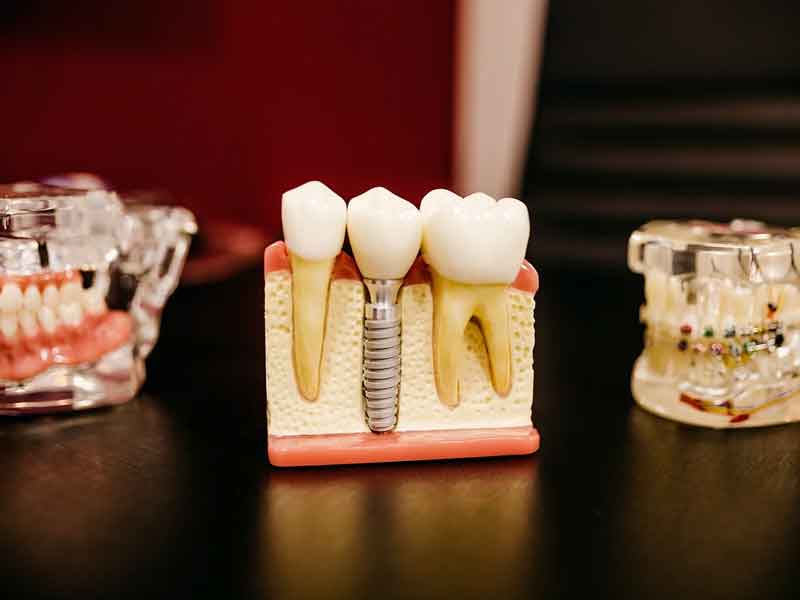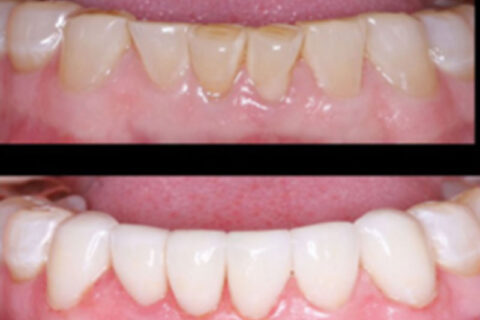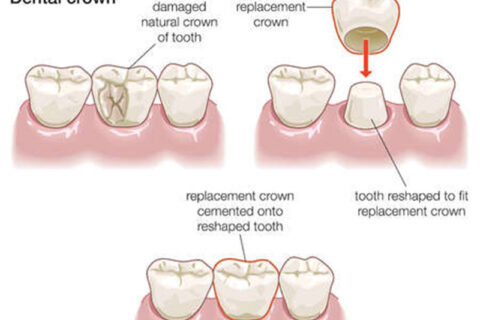What You Need to Know About: Crown and Bridge

Crown and bridge treatment will restore lost teeth, support remaining teeth and help you maintain optimum dental health. If you’re faced with tooth loss, crown and bridge treatment may be the right restorative option for you. This long-term solution can help prevent the cycle of problems that can occur when just one tooth is missing, such as shifting of the remaining teeth, decay, periodontal disease and bone loss.
A crown – sometimes called a “cap” – is a tooth-like covering placed over a carefully prepared existing tooth. Used to strengthen, restore or improve the appearance of your natural tooth, a crown is placed on an individual tooth much like a thimble over your finger. In addition to being used to strengthen a tooth to accommodate the attachment of a fixed bridge, crowns serve many functions. One of the most common is to support the tooth when there is no longer sufficient tooth structure left to place a filling. Crowns may also be used to protect the structure of a tooth that is fractured or broken. Type of crowns that can be used are porcelain fused-to-metal crowns, full ceramic crowns, full gold crowns, or partial coverage gold or ceramic crowns.
Sometimes crown and bridge treatment is necessary. For instance, losing a permanent tooth – whether it be due to dental decay, periodontal (gum) disease, injury or accident- can cause many serious problems for your neighboring teeth. Because the support and chewing forces are altered, the remaining teeth may begin to shift. The opposing tooth above or below the lost tooth can begin to move up or down and out of the socket, which can accelerate gum disease and further break down the bone structure. If the missing tooth is not replaced, more teeth may eventually be lost due to improper forces exerted during chewing.
The way the treatment is performed is quite rigorous. At the first appointment, we complete a thorough oral examination, including an evaluation of your dental history. Any necessary x-rays are completed at this time. During this restorative procedure, we first anesthetize the area to be treated. Next, we carefully shape and contour the tooth or teeth to be crowned to allow the crown or bridge sufficient space for proper fit and appearance. Finally, we make an impression of the area and fit the teeth involved with a temporary crown or bridge to protect them until your next appointment. At the following appointment, we evaluate the final crown or bridge for proper fit before placing it permanently, making final adjustments if necessary.
We’ll be happy to answer any questions you may have throughout your crown and bridge treatment. During the process we will do everything we can to ensure your comfort. Our goal is to help you preserve your smile for a lifetime.


